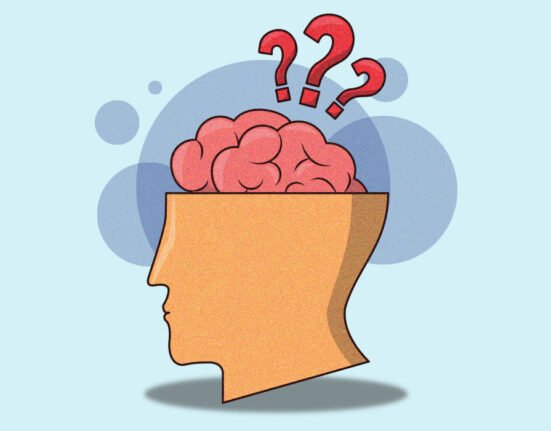For every one of us, modern life is stressful. You may come back home many days tired and wanting the nights to be longer. Have you wondered how different sexes would be reacting to stress and how this stress may affect men and women in various ways? Based on recent studies there are shreds of evidence of a stress gap between men and women when it comes to stress and gender. This indicates that their reactions to stress are different.
Stress in Males and Females
The stress levels of men and women differ, indeed. According to these studies, women experience higher levels of stress than men. Men and women experience stress physiologically in various ways. You may assume that since their natures are different, the difference in how they react to stress is just a strategic one.
This may not be the case as their brains may respond differently. The stress hormone cortisol is released by both of their brains. But the brain also releases oxytocin when a woman is under stress. Additionally, oxytocin is a feel-good hormone that enables women to form friendships. However, it is only released in very little amounts in men.
Let’s start by talking about men’s stress response. Men really respond and recover from stress more quickly when they are alone and can focus on themselves. In other words, when given the opportunity to unwind, they become less stressed. For instance, it can take them 15 or 30 minutes to recover from that stressful phase caused during managing their work.
Psychological Stress
A man’s body reacts to stress differently physiologically. They frequently have hypertension or elevated blood pressure. Additionally, he can experience chronic stress, which raises the risk of developing several illnesses like heart disease and stroke. Therefore, studies recommend men to engage in physical activity by going to the gym to reduce stress.
Looking into the women’s side of the story. When they are alone, women do not handle stress well. They need to talk and look for emotional support. Women, therefore, cope better with stress when they are in support groups with other women. When stressed, they may experience severe anxiety. Additionally, if chronic stress lasts for a long time, it might occasionally cause depression. Women can become tired due to this.
Additionally, the large amounts of weight gain are also a result of this weariness. Yes, women tend to eat more when they are stressed out. This may result in negative consequences such as dealing with obesity. The person may store more energy in their fat cells when they put on weight, which causes the fat cells to enlarge and become clogged with the cortisol hormone. Hence, these fat cells may require cleaning.
So, a woman who has had a lot of It can get better mentally by getting together with other women. She can also practice meditation, get a massage, improves her abilities, picks up a new interest, be creative, and read literature.
Recent Research Study
A set of nerve cells in the mouse brain have been shown to play a role in the development of unpleasant emotional states and long-term stress, according to researchers at Sweden’s Karolinska Institutet. A variety of cutting-edge methods have mapped the neurons, which also include estrogen receptors, potentially explaining why women are generally more sensitive to stress than males.
The Techniques Used
Science has long been unsure about precisely which brain networks give rise to unfavourable emotions (aversion) and persistent stress. KI researchers Konstantinos Meletis and Marie Carlén and their group have been able to map out a particular neuronal pathway in the mouse brain connecting the hypothalamus to the habenula that regulates aversion by combining cutting-edge techniques like Patch-seq, large-scale electrophysiology (Neuropixels), and optogenetics.
- Patch-seq: Patch-seq enables the mapping of the various neuronal subtypes in the brain by combining measurements of the electrical characteristics of individual cells with measures of gene expression (RNA sequencing).
- Neuropixels: The Neuropixels probe is a novel electrode for large-scale electrophysiological investigations that enables the simultaneous recording of hundreds of individual neuronal activities.
- Optogenetics: Optogenetics is used to regulate the activity of specific neurons. The technique includes injecting light-sensitive proteins into the target neurons, such as channel proteins from the membranes of single-cell organisms. Researchers can control the many cell types in the mouse brain by using light to determine how they work.
Key Findings
An intriguing finding is that the neurons associated with aversion are sensitive to estrogen levels because they have an estrogen receptor. When both genders of mice were exposed to the same kind of unpredictable moderately unpleasant stimuli, the male mouse experienced a stress response that lasted for a shorter duration compared to the female mouse.
There hasn’t been a biological explanation for why women experience anxiety and depression at higher rates than men, according to Marie Carlén, a professor at the Department of Neuroscience. Researchers have identified a mechanism that can explain these mouse sex differences.
We found that estrogen receptor 1-expressing (Esr1+) neurons in the lateral hypothalamic area (LHA) and lateral habenula (LHb) are necessary for fear conditioning in both male and female mice. Silencing Esr1+ LHA-LHb neurons in female mice revealed a reduction in aversive responses.
In response to the unpredictable stressors, the researchers discovered that female mice established a persistent stress state. This included significantly more marble burying, unpleasant behaviours in the looming test, and immobility in the forced swim test 24 hours after the previous unpredictable shock exposure. By using cell-type-specific silencing, this result demonstrated that only female mice underwent a severe and sustained, that this state needed the activation of Esr1+ LHA-LHb neurons.
The findings report that upon induction of the chronic stress state in female mice, Esr1+ burst-type neurons (prominent firing in female mice), through shorter action potential duration and greater maximal firing, became consistently more excitable. To activate the stress state and bring about this unique change in intrinsic characteristics among these neurons, it is necessary to activate the sex-specific sensitivity.













Leave feedback about this